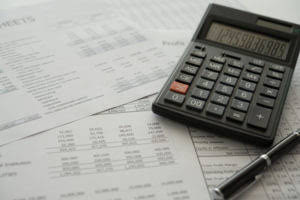
Banking with SoFi means you have access to paper checks and can make no-cost, peer-to-peer (P2P) money transfers to anyone with a US-based bank account right from your phone. What’s more, when you open your accounts with direct deposit, you can earn a competitive APY. An outstanding check refers to a check that a payee has not yet deposited or cashed. The check is still active and can be presented for payment, but it’s unaccounted for in the payer’s bank balance.
How to Identify Outstanding Checks
If the check bounces, the drawer may be charged a fee by their bank and their credit rating may be damaged. An outstanding check is a check that has not been cashed or deposited. This definition outstanding check definition is important because it highlights the key characteristic of an outstanding check, which is that it is still in circulation and has not yet been presented to the bank for payment.
- Effective management of outstanding checks involves maintaining accurate records, regular reconciliation, monitoring account balances, and timely communication with payees.
- It is important to be aware of the potential consequences of outstanding checks and to take steps to avoid them.
- If you issue a check and the recipient forgets or delays in depositing, it becomes outstanding.
- If you write a check and the money never leaves your account, you may develop the false belief you can spend those funds, but the money still belongs to the payee.
- Failure to track and manage outstanding checks can lead to discrepancies in financial records, inaccurate cash balances, and potential cash flow issues.
Keep Records
Unlike a check, deposits have already been received by the bank and are being processed. Different banks have different processing times, but most outstanding deposits typically clear within three business days. Business owners know that outstanding checks might take weeks or months to get cashed. On a bank statement, an outstanding check means the check amount has been deducted from your account balance but the bank has not processed it yet. For individuals, the risk lies in overspending and the potential for overdraft fees should the outstanding check be presented for payment unexpectedly.
If the Check Is Less Than Six Months Old
If the drawer does not have sufficient funds in their account to cover the check when it is presented, the check will bounce and the drawer may be charged a fee by their bank. In addition, the drawer’s credit rating may be damaged if the check is not honored. One vital strategy is keeping track of stale dated cheques and ensuring they are voided after a certain period.

Since an outstanding check represents an amount deducted from the company’s records but not yet from its bank balance, it needs to be accounted for in this process. For the checks to be cleared, the recipient must deposit the check at their bank, and the issuing bank must confirm the availability of sufficient funds to cover the check’s amount. Thus, an outstanding check plays a crucial role in maintaining the accuracy and reliability of a company’s financial reporting.
- However, they still represent a future cash outflow when they will be cashed or deposited by the recipient.
- Reconciling outstanding checks is a critical part of ensuring accurate financial records and tracking cash flow effectively.
- Issuing NSF checks may have legal implications, including potential lawsuits or other penalties.
- You should take all reasonable steps to cash or deposit outstanding checks.
Ways to Avoid and Manage Outstanding Checks
The payee’s bank will then reject the check due to not sufficient funds, and will charge the payee a fee. In this situation, the payee will need to ask the payer for a replacement payment from a valid checking https://www.bookstime.com/ account, and may demand compensation for the NSF fee. An outstanding check is a financial instrument that has been written by an entity but has not been cashed or deposited by the recipient yet.
A Check Issued to Me Is Outstanding: Now What?
Tools like digital banking apps, online money transfers, and direct deposits offer instant, effortless transactions in real-time. Bounced checks result when there is not enough money in the account to cover the check amount. In the U.S., outstanding checks are considered to be unclaimed property and the amounts must be turned over to the company’s respective state after several years. An outstanding check is a check that a company has issued and recorded in its general ledger accounts, but the check has not yet cleared the bank account on which it is drawn. This means that the bank balance will be greater than the company’s true amount of cash.

- Checks that are outstanding for a long period of time are known as stale checks.
- Like business checks, personal checks are generally considered invalid after six months (180 days).
- They remain « outstanding » until they are presented for payment or are canceled by the payee.
- Outstanding checks are important because they can have negative consequences for businesses and individuals.
- Understanding the importance of tracking outstanding checks and incorporating it into financial practices contributes to responsible money management and mitigates potential financial risks.
- You can also call or write to remind the payee that the check is outstanding.
When you ask them how they want to be paid, try suggesting a money order, cashier’s check, or cash. You can ask if they’re willing to deduct the stop payment fee from the original amount. If the outstanding check is less than six months old, you should not write another check. The original check is still valid, and the payee can cash or deposit it. It’s fine to contact the recipient after a few weeks to find out if they’ve lost the check or when they plan on cashing it. If they can’t get to the bank, you may want to ask them to return the check to you and you can pay them using another method.
- They are not tax efficient and an investor should consult with his/her tax advisor prior to investing.
- Voiding a check usually occurs when there is an error or when a check needs to be cancelled for any reason, such as a payment dispute or a duplicate payment.
- For individuals, they can lead to late fees and damage to their personal credit score.
- Since an outstanding check represents an amount deducted from the company’s records but not yet from its bank balance, it needs to be accounted for in this process.
- As mentioned above, you may need to return the original check or sign documents confirming the check is lost or destroyed.
Consequences of Not Managing Outstanding Checks
Be mindful of post office conditions and potential delays for seasonality, weather, or staffing issues. Outstanding checks that remain so for a long period of time are known as stale checks. Yes, outstanding checks can affect your credit score if they lead to NSF (Non-Sufficient Funds) checks. NSF checks are reported to credit bureaus and can negatively impact your credit history. Moreover, careful recordkeeping could prevent timely bill payments from going unnoticed.
How Do Outstanding Checks Work?
To avoid the financial risks that come with outstanding checks, businesses need to follow up on uncashed checks. The main difference between outstanding checks and outstanding deposits is that a check takes money from your bank account while a deposit puts money into your bank account. That said, both outstanding checks and outstanding deposits refer to transactions that have not yet been posted to your account. Outstanding checks are not bad per se, but it’s generally wise to promptly deposit or cash checks so that they do not expire.



